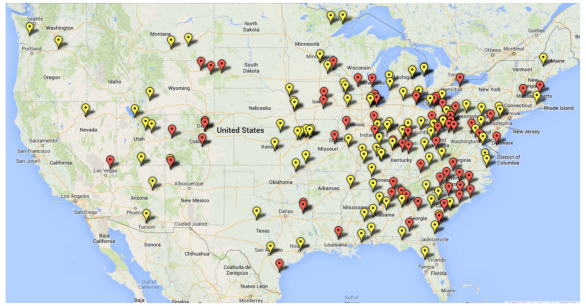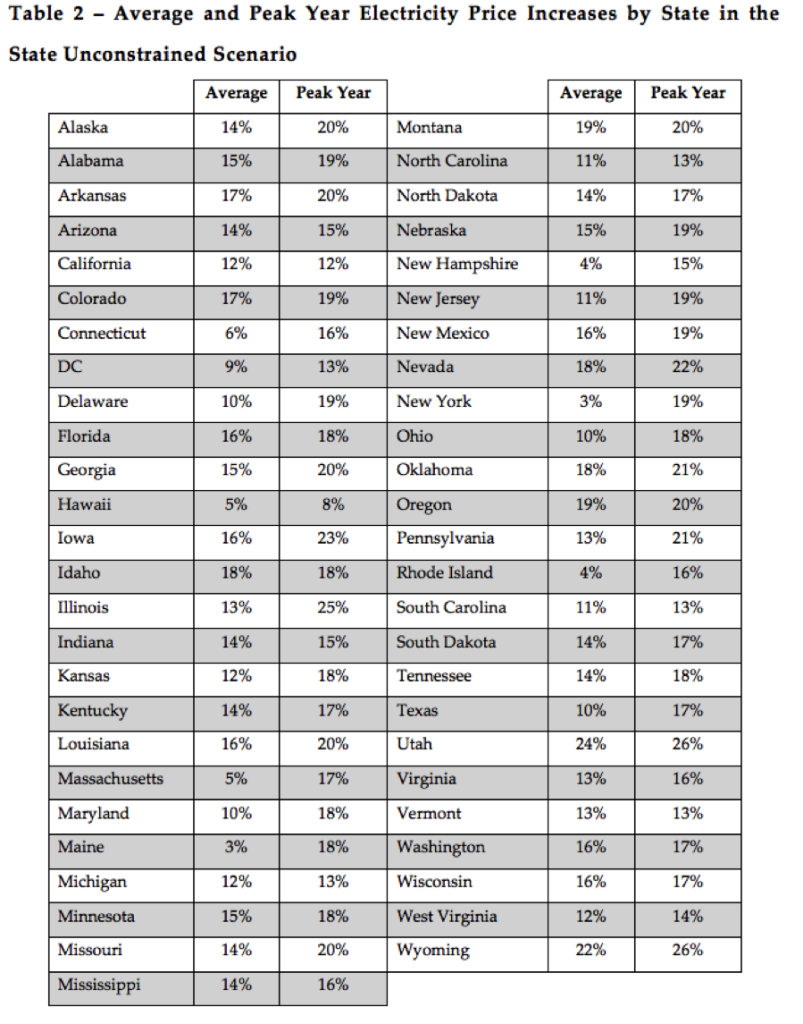Comments Show Flaws with EPA’s Proposed Power Plant Rule
On Dec. 1, the public comment period closed for the Environmental Protection Agency’s (EPA) proposed carbon dioxide emissions rule for existing power plants. EPA received more than 1.4 million comments on the proposal, which the agency expects to finalize by next summer in accordance with President Obama’s “climate action plan.”
We’ve compiled a survey of comments that highlight the numerous flaws with EPA’s proposed rule. The comments explain the rule’s dubious legal basis, questionable science, enormous economic costs, and negligible climate benefits.
Institute for Energy Research: “EPA’s proposed guidelines for carbon dioxide (CO2) emissions from existing stationary sources are fatally flawed. The rule violates the language of the Clean Air Act; it arbitrarily and capriciously imposes emission reduction goals with no analysis from EPA on the actual warming impacts; it is not supported by the American people nor Congress; it will drive up electricity prices; and it will threaten the stability of the electricity grid.”
IER finds that a combination of EPA rules, including the CO2 rule for existing power plants, threatens to close 72 gigawatts of reliable electricity generation, mostly from coal-fired power plants. For perspective, 72 GW is enough to power every home in every state west of Mississippi River, excluding Texas. In the following map from IER’s comment, red dots show power plant closures since 2000, while yellow dots indicate projected power plant closures:
Marlo Lewis, Competitive Enterprise Institute, et al: “The [Clean Power Plan] is illegitimate and unlawful. Its implementation costs are likely much greater than EPA estimates. It will increase electricity prices and raises reliability concerns. Its putative climate benefits are illusory. The regulation should be withdrawn.”
CEI explains that EPA’s cost estimates are “implausibly low.” EPA claims nationwide compliance costs of $7.3 billion to $8.8 billion in 2030. Yet the Virginia State Corporation Commission estimates that just one electric utility—Dominion Power—will be forced to spend at least $5.5 billion to meet the state’s emission reduction target imposed by EPA.
The true costs are likely much higher. For instance, NERA Economic Consulting finds that EPA’s rule will cost states $41 billion in 2030 and $336 billion over 15 years.
Professor Laurence H. Tribe and Peabody Energy Corporation: “The Proposed Rule should be withdrawn. It is a remarkable example of executive overreach and an administrative agency’s assertion of power beyond its statutory authority. Indeed, the Proposed Rule raises serious constitutional questions.”
Tribe’s analysis is especially damning considering he was President Obama’s law professor at Harvard Law School. Although Tribe has described the president as “the best student I ever had” and supported his presidential campaigns, the professor gives Obama’s climate rule a failing grade for its open flouting of the Constitution.
Patrick J. Michaels and Paul C. Knappenberger, Cato Institute: “We demonstrate that the EPA’s proposed rule would result in no net benefits from avoided negative environmental effects as the environmental impacts of the proposed rule are negligible and scientifically undetectable.”
Michaels and Knappenberger focus on the scientific basis of EPA’s proposal. One interested finding, as highlighted below using EPA’s own models, is that EPA’s power plant rule will have a negligible impact on global temperatures, despite the fact that the whole point of the rule is to combat global warming.
U.S. House Committee on Science, Space, and Technology: “This proposal mocks our constitutional framework and subverts the rule of law. The brazen arrogance with which this Administration is steamrolling through such an arbitrary and capricious regulation is a breathtaking affront to the American people.”
The House Science Committee’s comment devotes much space to the “crude technical assessments” EPA uses to justify its rule. These technical flaws include an “inadequate peer review” process to determine the scientific basis of the rule, “systemic biases and major omissions” in EPA’s cost-benefit analysis, and “incomplete modeling” that “disregards a number of technical, regulatory, and economic realities.” The Committee calls on EPA to “abandon this proposal.”
William Yeatman, Competitive Enterprise Institute: “As explained above, the EPA is required to address the Clean Power Plan’s incompatibility with its underlying implementing [regulations], by either amending or rescinding 40 C.F.R. §60.22(b)(5). In so doing, the agency is required to conduct a legislative rulemaking and also to provide a “reasoned analysis.” Until such actions are performed, the Clean Power Plan’s inconsistency with the §111(d) implementing regulations evidences arbitrary and capricious decision making by the EPA.”
Like several commenters, Yeatman points out how EPA’s proposal violates congressional intent under the Clean Air Act. Yeatman uniquely points out how EPA is also running afoul of its own regulations. As he puts it, instead of following its own implementing regulations, Yeatman shows that EPA is opting for a “stark change in course” that leaves its rule “impermissibly inconsistent with its underlying regulations.”
American Coalition for Clean Coal Electricity: “The proposal is exorbitantly costly, poses a serious threat to electric reliability, and will have no meaningful effect on global climate change. For these reasons, EPA must withdraw the proposed Clean Power Plan in its entirety.”
ACCCE’s comment highlights the sheer magnitude of EPA’s proposal. As aforementioned, NERA finds that the rule could cost $366 billion or more. It will also impose double digit percentage electricity prices increases on residents of 43 states. The following table from ACCCE’s comment breaks down electricity rate increases by state:
American Chemistry Council, et al: “The Associations strongly oppose EPA’s approach in the proposed ESPS both because of the irreparable harm it will cause to electricity generation, reliability, and costs—if not to the economy as a whole—and because of the extraordinary precedent that EPA is proposing to create.”
This comment comes from “the nation’s leading energy, agriculture, and manufacturing sectors.” In it, the authors argue that EPA’s “extraordinary precedent” is to hold electric utilities “liable for unrelated actions and actors beyond the fence line of those facilities.” Historically, under the Clean Air Act utilities were only “accountable for actions specifically at their facilities and their facilities only.” The comment represents the unified voice of opposition from U.S. manufacturers.




Speak Your Mind